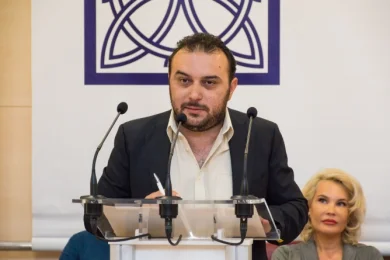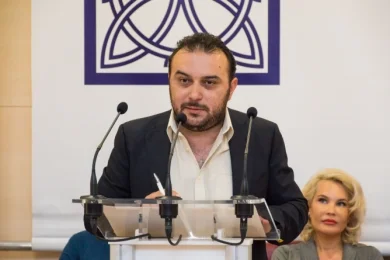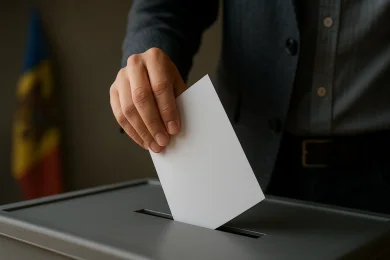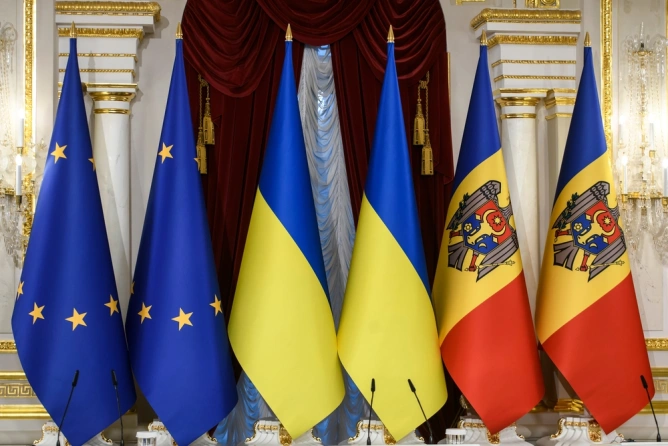16 June 14:38

Opinions
Foto INSCOP.ro
A month has passed since the big vote on May 18, 2025, which ended the long 2024 election year. A methodological question has been left in abeyance, but one that the press and the general public have taken a liking to and which has been talked about a lot around here. Ladies and gentlemen... they sing for you... only once every four years in our city: of course, the Spiral of Silence. So let's clarify a little, somewhat technically, what this is all about.
I've said it, other colleagues have said it: some use it when they need to cover up their poll failures. But the spiral of silence phenomenon exists. It is real and, unfortunately, extremely difficult to measure. In the case of polls, the spiral is ultimately based on a lie by the public, which at some point does not want to cooperate with public opinion pollsters. Reasons can be fear of stating the real opinion, shame of stating an opinion other than the one you think "normal" people have, but also outrage, mockery or, more recently, defiance. Anyway, the theory of the problem is more complex, but still clear. But it is not the subject of this article, but of an academic version of it, which I will prepare in the coming days. What needs to be said now is that the spiral of silence has no ideological dimension, nor does it have much to do with the content of the opinion or option concerned. Rather, it is a question of social context. It is based on the polarizations that are specific to public opinion and the way in which people perceive their option as being different from the majority, from those who think 'correctly' or from those who represent the 'legitimate', desirable, perhaps official, etc. view.
At its base, the spiral of silence theory started from the observation of self-censorship in public of opinions that their speakers see as minority, most likely in the idea of not isolating themselves from the group line of thinking, the leader, etc. And it is something that occurs from small groups and everyday interactions, to large, sophisticated groups, political, professional opinions, etc. And it can apply to many scenarios involving the public expression of opinion: from the acceptance in a group of teenagers of what t-shirt is cool and what t-shirt is not cool, or whatever they say today, to what opinions it is normal for a politician to display/not to display in public.
From the beginning, however, the story of the spiral of silence, as Elisabeth Noelle-Neumann sees it, is built around electoral phenomena, political polls and, why not, the public expression of political opinions (an expression that has reached a dubious peak today, with everyone's access to the general public via social networks).
The theory is evolving and, beware, the spiral of silence should not be thought to occur only in relation to those who have a numerically minority option: we can say that it occurs more likely in those who have an option they consider eccentric. It may, for example, be a minority option for an extremist or bizarre politician. But equally it may be an option accepted by a large number of people, but more discreet in its public exposure. An example: let's say that in a society, the media, the establishment and even business people say that it is good to welcome immigrants. For one reason or another, a significant part of the public does not want to accept the idea. But it's not a topic that is comfortable to come out in public in that society. For example, because the anti-immigration view will be more likely to be associated with racism, xenophobia, backwardness, etc. And then that view is under-represented in the public debate, but people do vote. And then there are surprises, because there hasn't really been a debate. The opposite can happen. If in a society it is the conservative and anti-immigrationist point of view that seems to be in the majority, or the one that dominates public debate and the institutions, the spiral of silence can work, between polls and voting, for the other side.
Not to mention the fact that, by the nature of today's society and mass communication, we have multiple publics and multiple public opinions, perhaps not just one, as in the West of the 70s. So the scenarios are more complicated. And they have a lot to do not only with the majority/minority dynamic, but with an option against the social norm or what is perceived at a given moment as institutionalized, legitimate, as properly, as the norm. This is precisely where the sociological interest in the phenomenon arises. If it explained, say, in France or the FRG in the 1980s, why a party considered unpopular was getting 8% of the vote at the polls instead of the 4% predicted by the polls, it was not a tragedy after all. It was even a wake-up call to society and the political mainstream. But if the phenomenon hides from you the sudden rise of a radical current of opinion, then we have a problem. Just so we know what we're talking about.
But again: content is not the key. The spiral of silence doesn't just appear in extremists, or just vegetarians, or just second-hand clothing. No. It appears in vegetarians if they perceive that at some point the norm is not to be vegetarian, but in ten years' time it may appear in beef-eaters if social fashion takes a dim view of meat-eating.
Strictly related to the elections of May 18, given the charged political atmosphere surrounding those elections and given that we all live in groups, networks or "geographies" whose opinions we see more clearly than the ghostly general opinion of society, there were most likely two spirals, one for candidate George Simion, one for candidate Nicușor Dan. However, if we look at the second criterion - who is more vocal in the public space, at least in the diaspora, the so-called spiral manifested itself more among the supporters of Nicușor Dan.
But finally, allow me to briefly offer a somewhat alternative explanation. There is in electoral studies a... paradigm, let's call it, akin to the famous spiral of silence. And it starts from an electoral phenomenon observed, this time in the UK. It is somewhat more empirical, less theoretically developed than the spiral of silence story. It's about the shy Tories, who embarrassed the polls in UK elections in, say, 1992 and 2015. Shy tories are like a freak of nature, more in jest than in earnest, they pop up from time to time when the Conservatives are in trouble, but they don't show up in the polls, they show up directly at the ballot box. Some say it's a particular manifestation of the spiral of silence, but we can't help but notice that here we have a concept defined by content - the Tories hide there from the polls and vote decisively afterwards, not the others. So it's not a contextual spiral of silence, but a socio-political ritual of Tory voters that is at least interesting.
One major difference from the spiral of silence story, though, is this: we don't know whether shy Tories are a problem with declaring their political choice in the polls. Many were not hiding their option, but their participation. We can talk about people with conservative views, not necessarily being disciplined Conservative Party voters, but at certain times deciding to turn out to vote, value, not politically. They may also be a phenomenon of turning out to vote in support of the Conservatives even though, possibly, in the polls they were declaring, not so much a different voting option, but rather their disinterest in the election. So they didn't say something else, they did something else....
The phenomenon, even if still theoretically unclear, is of interest to British sociologists. As I was saying, some explain it by the spiral of silence, others by the mobilization of voters who did not initially intend to participate but mobilize quickly when they feel their values at risk, others believe that we are simply talking about errors and limits of public opinion research.
But consider the second round of our May presidential election. Between the rounds, the polls gave very close scores for the two finalists. Nicușor Dan has made up much of the gap indicated by the first-round vote. Two days before the vote he had gained a minimal lead but estimates based on the previous vote gave George Simion the lead. Analysts pointed to the massive turnout as the only chance for Nicușor Dan.
Frankly, the turnout was not massive. Not small, but not unprecedented. But it was enough to make a necessary difference in favor of Nicușor Dan. And even in the diaspora it wasn't such a bad score for the pro-European candidate. Was it the spiral of silence? It was. In a public and online space dominated by sovereignist angers, it was. But I don't know if by that we should mean so much the self-censorship in the polls of those who voted for Nicușor Dan. Rather we are talking about the mobilization of a segment of voters with clear European and democratic values, not usually interested in politics, but who felt they had to intervene in perhaps the most tense Romanian elections since 2000. Officially, I think the "shy pro-Europeans" have appeared.
I've said it, other colleagues have said it: some use it when they need to cover up their poll failures. But the spiral of silence phenomenon exists. It is real and, unfortunately, extremely difficult to measure. In the case of polls, the spiral is ultimately based on a lie by the public, which at some point does not want to cooperate with public opinion pollsters. Reasons can be fear of stating the real opinion, shame of stating an opinion other than the one you think "normal" people have, but also outrage, mockery or, more recently, defiance. Anyway, the theory of the problem is more complex, but still clear. But it is not the subject of this article, but of an academic version of it, which I will prepare in the coming days. What needs to be said now is that the spiral of silence has no ideological dimension, nor does it have much to do with the content of the opinion or option concerned. Rather, it is a question of social context. It is based on the polarizations that are specific to public opinion and the way in which people perceive their option as being different from the majority, from those who think 'correctly' or from those who represent the 'legitimate', desirable, perhaps official, etc. view.
At its base, the spiral of silence theory started from the observation of self-censorship in public of opinions that their speakers see as minority, most likely in the idea of not isolating themselves from the group line of thinking, the leader, etc. And it is something that occurs from small groups and everyday interactions, to large, sophisticated groups, political, professional opinions, etc. And it can apply to many scenarios involving the public expression of opinion: from the acceptance in a group of teenagers of what t-shirt is cool and what t-shirt is not cool, or whatever they say today, to what opinions it is normal for a politician to display/not to display in public.
From the beginning, however, the story of the spiral of silence, as Elisabeth Noelle-Neumann sees it, is built around electoral phenomena, political polls and, why not, the public expression of political opinions (an expression that has reached a dubious peak today, with everyone's access to the general public via social networks).
The theory is evolving and, beware, the spiral of silence should not be thought to occur only in relation to those who have a numerically minority option: we can say that it occurs more likely in those who have an option they consider eccentric. It may, for example, be a minority option for an extremist or bizarre politician. But equally it may be an option accepted by a large number of people, but more discreet in its public exposure. An example: let's say that in a society, the media, the establishment and even business people say that it is good to welcome immigrants. For one reason or another, a significant part of the public does not want to accept the idea. But it's not a topic that is comfortable to come out in public in that society. For example, because the anti-immigration view will be more likely to be associated with racism, xenophobia, backwardness, etc. And then that view is under-represented in the public debate, but people do vote. And then there are surprises, because there hasn't really been a debate. The opposite can happen. If in a society it is the conservative and anti-immigrationist point of view that seems to be in the majority, or the one that dominates public debate and the institutions, the spiral of silence can work, between polls and voting, for the other side.
Not to mention the fact that, by the nature of today's society and mass communication, we have multiple publics and multiple public opinions, perhaps not just one, as in the West of the 70s. So the scenarios are more complicated. And they have a lot to do not only with the majority/minority dynamic, but with an option against the social norm or what is perceived at a given moment as institutionalized, legitimate, as properly, as the norm. This is precisely where the sociological interest in the phenomenon arises. If it explained, say, in France or the FRG in the 1980s, why a party considered unpopular was getting 8% of the vote at the polls instead of the 4% predicted by the polls, it was not a tragedy after all. It was even a wake-up call to society and the political mainstream. But if the phenomenon hides from you the sudden rise of a radical current of opinion, then we have a problem. Just so we know what we're talking about.
But again: content is not the key. The spiral of silence doesn't just appear in extremists, or just vegetarians, or just second-hand clothing. No. It appears in vegetarians if they perceive that at some point the norm is not to be vegetarian, but in ten years' time it may appear in beef-eaters if social fashion takes a dim view of meat-eating.
Strictly related to the elections of May 18, given the charged political atmosphere surrounding those elections and given that we all live in groups, networks or "geographies" whose opinions we see more clearly than the ghostly general opinion of society, there were most likely two spirals, one for candidate George Simion, one for candidate Nicușor Dan. However, if we look at the second criterion - who is more vocal in the public space, at least in the diaspora, the so-called spiral manifested itself more among the supporters of Nicușor Dan.
But finally, allow me to briefly offer a somewhat alternative explanation. There is in electoral studies a... paradigm, let's call it, akin to the famous spiral of silence. And it starts from an electoral phenomenon observed, this time in the UK. It is somewhat more empirical, less theoretically developed than the spiral of silence story. It's about the shy Tories, who embarrassed the polls in UK elections in, say, 1992 and 2015. Shy tories are like a freak of nature, more in jest than in earnest, they pop up from time to time when the Conservatives are in trouble, but they don't show up in the polls, they show up directly at the ballot box. Some say it's a particular manifestation of the spiral of silence, but we can't help but notice that here we have a concept defined by content - the Tories hide there from the polls and vote decisively afterwards, not the others. So it's not a contextual spiral of silence, but a socio-political ritual of Tory voters that is at least interesting.
One major difference from the spiral of silence story, though, is this: we don't know whether shy Tories are a problem with declaring their political choice in the polls. Many were not hiding their option, but their participation. We can talk about people with conservative views, not necessarily being disciplined Conservative Party voters, but at certain times deciding to turn out to vote, value, not politically. They may also be a phenomenon of turning out to vote in support of the Conservatives even though, possibly, in the polls they were declaring, not so much a different voting option, but rather their disinterest in the election. So they didn't say something else, they did something else....
The phenomenon, even if still theoretically unclear, is of interest to British sociologists. As I was saying, some explain it by the spiral of silence, others by the mobilization of voters who did not initially intend to participate but mobilize quickly when they feel their values at risk, others believe that we are simply talking about errors and limits of public opinion research.
But consider the second round of our May presidential election. Between the rounds, the polls gave very close scores for the two finalists. Nicușor Dan has made up much of the gap indicated by the first-round vote. Two days before the vote he had gained a minimal lead but estimates based on the previous vote gave George Simion the lead. Analysts pointed to the massive turnout as the only chance for Nicușor Dan.
Frankly, the turnout was not massive. Not small, but not unprecedented. But it was enough to make a necessary difference in favor of Nicușor Dan. And even in the diaspora it wasn't such a bad score for the pro-European candidate. Was it the spiral of silence? It was. In a public and online space dominated by sovereignist angers, it was. But I don't know if by that we should mean so much the self-censorship in the polls of those who voted for Nicușor Dan. Rather we are talking about the mobilization of a segment of voters with clear European and democratic values, not usually interested in politics, but who felt they had to intervene in perhaps the most tense Romanian elections since 2000. Officially, I think the "shy pro-Europeans" have appeared.


.webp)







.webp)










